OLD MASTER PAINTINGS—AND ISSUES OF ART RESTITUTION FOCUS IN EXHIBITION AT WORCESTER ART MUSEUM
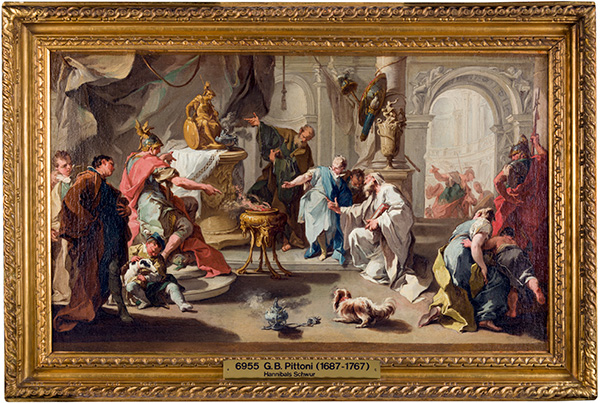
What the Nazis Stole from Richard Neumann (and the search to get it back)
Presents 14 Works on Long-term Loan from the Family of Austrian Collector
Dr. Richard Neumann
The exhibition opened April 10, 2021 and will continue through January 16, 2022,
Worcester, MA—March 9, 2021—This spring, the Worcester Art Museum (WAM) will present an exhibition of works from the collection of Dr. Richard Neumann (1879-1959), a discerning and prolific Austrian businessman of Jewish heritage who was committed to promoting the important role of the arts in civic life—and whose collection of more than 200 paintings and sculptures was confiscated by the Nazis through forced sales or outright theft. Titled What the Nazis Stole from Richard Neumann (and the search to get it back), the exhibition includes 12 Old Master paintings and two sculptures and will trace his and his family’s efforts to reclaim these works over the last 70 years. The exhibition opens April 10, 2021 and will continue through January 16, 2022, after which the loans will be integrated into WAM’s existing Old Master collection galleries, further enhancing the Museum’s presentation of such works—and in keeping with Dr. Neumann’s lifelong desire to have great art accessible and enjoyed by the public.
Born in Vienna to a well-to-do family of textile manufacturers, Richard Neumann was both president of his family’s company—which had mills throughout Austria and Bohemia—and a lover of the arts who earned his Ph.D. at the University of Heidelberg. By the age of 42 he had assembled a grouping of works of such quality that 28 of the pieces were given the status of Viennese “landmarks” in 1921. Among these were the left and right wings of a 16th-century triptych by the Dutch painter Maerten van Heemskerck and two sculptures by Alessandro Algardi and Guiseppe Sanmartino. Also included in this exhibition and the loan to WAM are works by Alessandro Magnasco, Giovanni Battista Pittoni the Younger, and Alessandro Longhi.
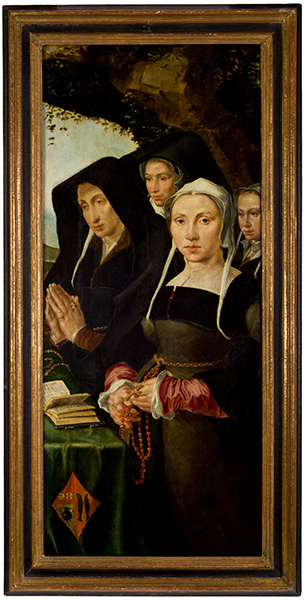
Following Nazi Germany’s annexation of Austria in 1938, Neumann’s collection was inventoried in accordance with anti-Jewish laws put in place by the Nazis and most of it was seized through a series of forced sales and the denial of requests for export licenses. Art historian Sophie Lillie documented some 50 of the stolen works in her book “Was einmal war” (“what once was”) based on inventories of art works recovered by the “Museum Men” at the end of the second World War. In 1938, Richard Neumann and his wife Alice fled from Vienna to Paris, taking with them some 38 works from their collection. They lived in Paris for a while after the Nazi invasion of France, but in 1942 they managed to escape to the unoccupied zone and eventually to Cuba. At that time, they lost the remaining works of art in their possession.
As a refugee in Cuba during and some years after the end of WWII, Dr. Neumann initially worked as a foreman at a textile factory, while lecturing on art in the evenings to both other escapees and Cuban audiences. Realizing that Cuba lacked a world-class museum, he undertook a major role in the creation of Havana’s Palacio de Belles Artes. During this period, he also began an effort to recover his collection but was consistently thwarted by various Austrian museum and cultural officials. In the early 1950s, Dr. Neumann relocated from Havana to New York City to be closer to his daughters. He died in New York in 1959. In the late 1990s, when museums around the world had come to agreements on restituting works of art stolen by the Nazis, his grandchildren resumed the fight for the recovery of his collection. To date, some 16 pieces have been returned to the family, of which 14 are in this exhibition.
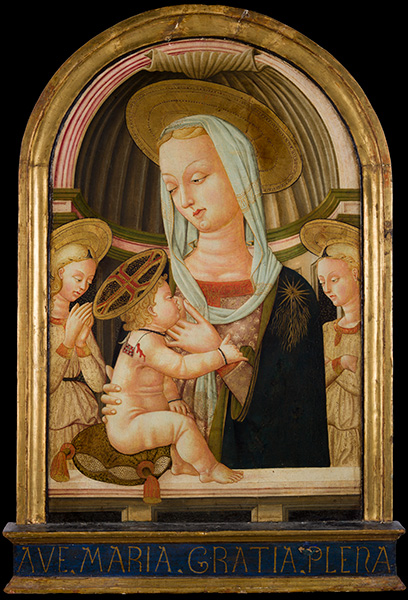
“Richard Neumann was clearly a discerning collector with an eye for fine works of art and, at the same time, a connoisseur who believed in the obligation to promote the role of the arts in civic life,” said Claire Whitner, the James A. Welu Curator of European Art at the Worcester Art Museum. “While his family’s struggle for the restitution of his collection is all too emblematic of the challenges faced by many other Jewish collectors of that period, we are tremendously grateful to his family for their generosity in committing to this long-term loan of these works, which will make it possible for a new generation of audiences to admire them, as well as for us to conduct new research and scholarship.”
“My grandfather had a deep love and understanding of timeless fine art, and of its importance to a civilized society,” said Tom Selldorff, grandson of Richard Neumann. “It’s been a privilege to work on recovering some of his collection and to pass his passion on to our children and grandchildren.”
Recognizing the very personal nature of the works in What the Nazis Stole from Richard Neumann, the design of the exhibition will emphasize that the collection was private property kept in the home, by creating a space that evokes what a family parlor in Vienna of this period might have looked like. A floor-to-ceiling reproduction will be created, made from a photograph of the family’s Vienna home. Period-appropriate seating will also be included, so that visitors can view part of the collection from the vantage point they would have had as guests of the Neumann’s. There will also be books in this parlor seating area that relate to the topic of Nazi-era provenance and restitution claims, underscoring the challenges that many families have faced since the end of World War II.
Throughout the exhibition, information will be presented that engages art history, historical context—in particular, how these works were seen and presented at the time Neumann lived in Vienna—and the process by which the Neumann family was deprived of these works. Because Neumann wrote extensively on aesthetic theory in European art and art historical trends, the exhibition is an opportunity to explore attitudes towards Old Master paintings from the early 20th century—just as Vienna was becoming a center for modern art. Supporting the exhibition’s focus on restitution, and the research required for that process, a couple of paintings will be installed so that visitors can view both the front and back, to illustrate how the backs of frames and backing boards can be used as keys to trace a work’s provenance.
What the Nazis Stole from Richard Neumann (and the search to get it back) is sponsored by Fallon Health. Additional support has been provided by the Jewish Federation of Central Massachusetts, The Strassler Center for Holocaust and Genocide Studies at Clark University, the PEACE Fund, Marlene and David Persky, Carol and Michael Sleeper, Dr. and Mrs. Herbert Dean, Dr. Shirley S. Siff, Johanna D. Drooz Yoffie and Alan S. Yoffie, Carol Seager and anonymous donors.
WAM’s exhibition builds on an earlier presentation that included two other restituted works from the Neumann collection. In 2010, Martin Johann Schmidt’s Saint Florian and Saint Neopomuk—the two outer panels of a triptych by the prolific 18th century artist who was known as the “Kremser Schmidt” after his hometown of Krems—were featured in the exhibition The Secret Life of Art: Mysteries of the Museum Revealed at the Currier Museum of Art in Manchester, N.H. More recently, the large format works (which are not included in WAM’s exhibition) were sold to an Austrian museum by Neumann’s heirs.
High resolution images can be downloaded here
About the Worcester Art Museum
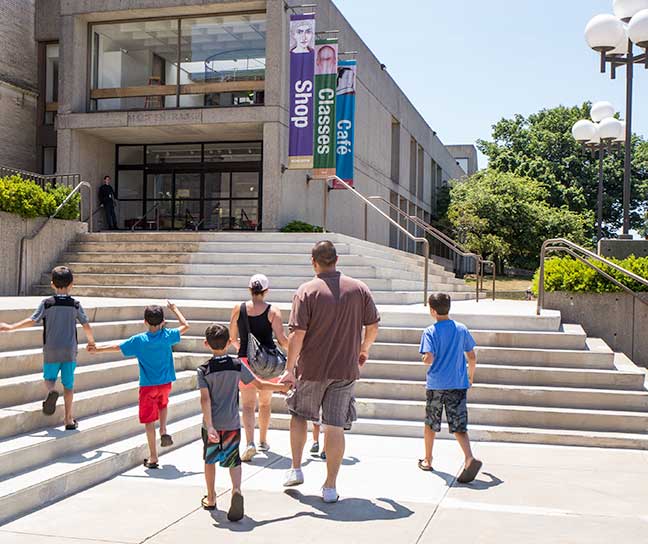
The Worcester Art Museum creates transformative programs and exhibitions, drawing on its exceptional collection of art. Dating from 3,000 BCE to the present, these works provide the foundation for a focus on audience engagement, connecting visitors of all ages and abilities with inspiring art and demonstrating its enduring relevance to daily life. Creative initiatives—including pioneering collaborative programs with local schools, fresh approaches to exhibition design and in-gallery teaching, and a long history of studio class instruction—offer opportunities for diverse audiences to experience art and learn both from and with artists.
Since its founding in 1896, the Worcester Art Museum has assembled a collection of 38,000 objects: from the ancient Near East and Asia, to European and American paintings and sculptures, and continuing with works by contemporary artists from around the world. WAM has a history of making large scale acquisitions, such as its Medieval Chapter House, the Worcester Hunt Mosaic, its 15th-century Spanish ceiling, and the Flemish Last Judgment tapestry. In 2013, the Museum acquired the John Woodman Higgins Armory Collection, comprising two thousand arms and armor objects. It continues to commission and present new works, such as 2019’s exhibition With Child: Otto Dix/Carmen Winant, which objectively explored pregnancy and birth in works by the German artist Otto Dix (1891-1969), and contemporary American visual artist Carmen Winant (b. 1983).
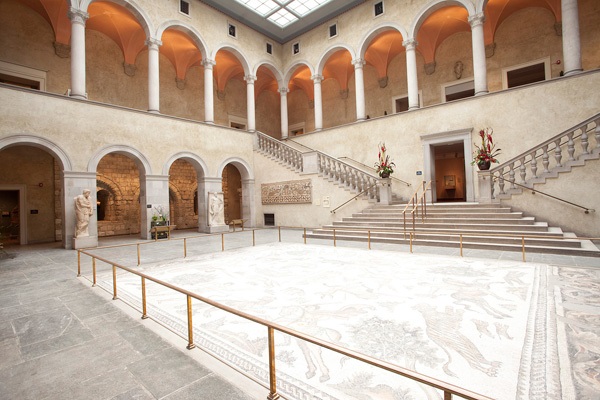
The Worcester Art Museum, located at 55 Salisbury Street in Worcester, MA, is open Wednesday through Sunday from 10 a.m. to 4 p.m. Admission is $18 for adults, $14 for seniors 65+ and for college students with ID. Admission is free for Museum Members and children ages 0-17. On the first Sunday of each month, admission is free for everyone. Museum parking is free. Admission is by timed ticket only, which must be purchased in advance at worcesterart.org.
